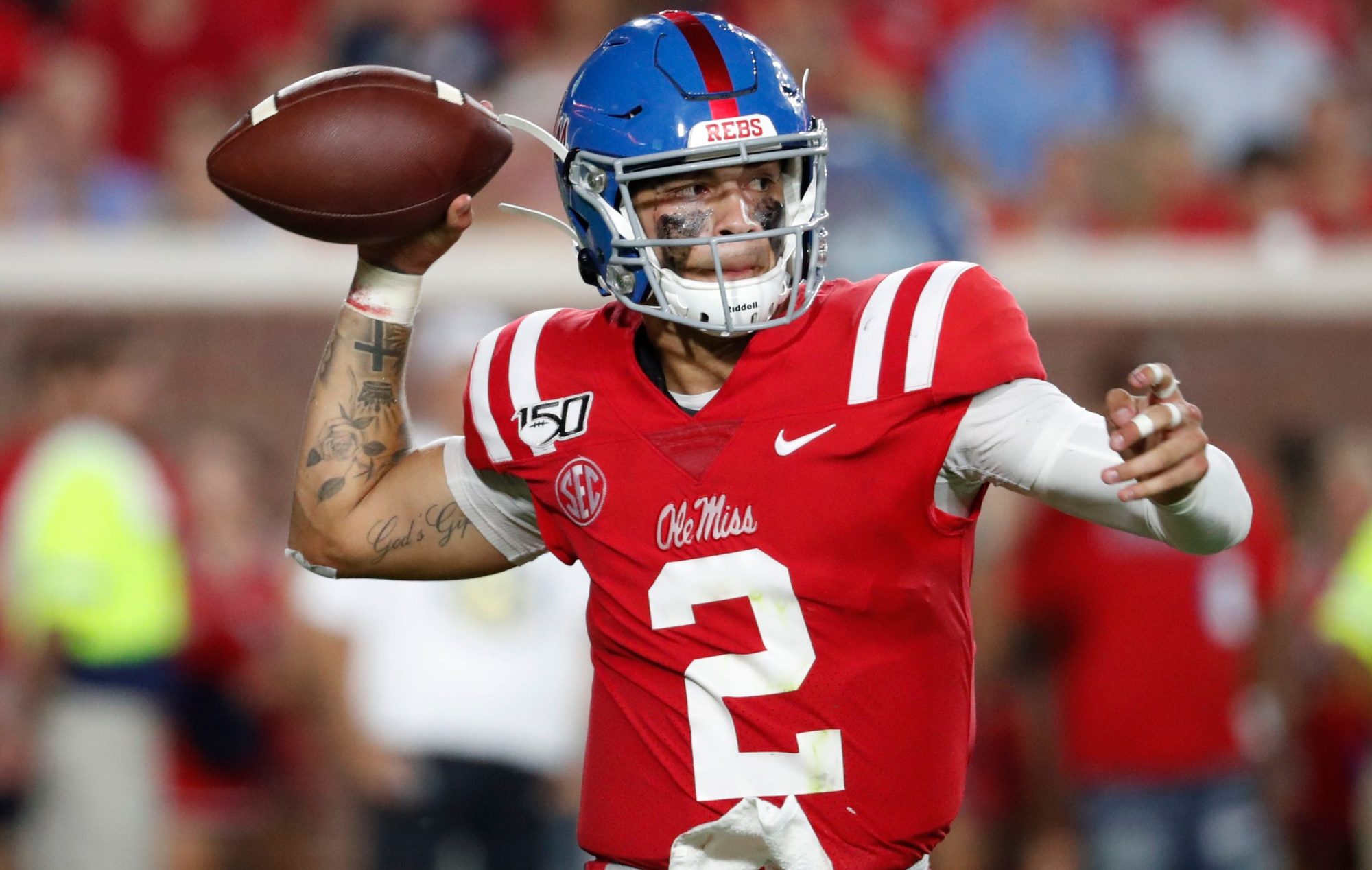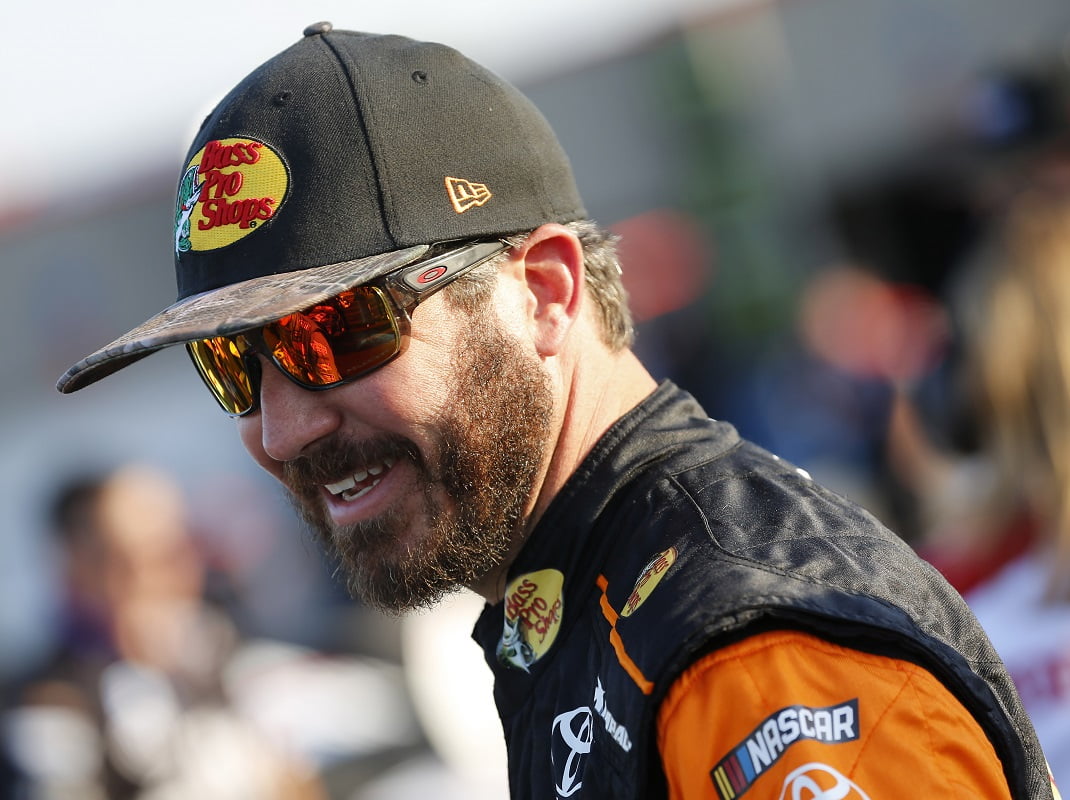Heading into another great college football weekend, here are the top offensive positional rankings for the 2022 NFL Draft Prospects, including Ole Miss quarterback Matt Corral being the top-rated passer.
2022 NFL Draft Prospects | Offensive Rankings
Quarterbacks
| Positional Rank | Top-100 Rank | Player | School |
| 1 | 13 | Matt Corral | Ole Miss |
| 2 | 16 | Malik Willis | Liberty |
| 3 | 33 | Sam Howell | North Carolina |
| 4 | 38 | Kenny Pickett | Pittsburgh |
| 5 | 52 | Desmond Ridder | Cincinnati |
Perhaps no positional ranking has changed more on my board since the start of the season than the quarterbacks. After Spencer Rattler’s benching, he’s off my board completely, as I can’t contemplate a rationale that would explain him entering the 2022 NFL Draft.
Kedon Slovis’s health and inconsistency have also led to me removing him from my board, and I could even see Howell choosing to stay another year. His accuracy has taken a step backward, and at this point, his draft stock rests solely on his impressive physical traits.
On a more positive note, we’ve seen several quarterbacks up their game over the first half of the season. Corral continues to combine efficiency with big-play upside, but the most significant development is he is consistently making better decisions. He’s had a reckless streak in the past, but that gunslinger mentality appears to have taken a back seat, and it’s got him in the Heisman race. However, it’s Liberty’s Willis that own’s the highest overall ceiling in the class. His combination of size, athleticism, and arm talent are reminiscent of Trey Lance, but like Lance, teams will have to draft him and employ a patient approach.
Pickett has taken his game to another level in 2021 as well. He’s always been an accurate passer that makes sound decisions. However, he’s proving that he can make accurate throws to every level, and he looks more durable as well.
That is the big difference between him and Ridder. Both are good athletes with good but not elite arm strength. However, Ridder is still on the lighter side. Nevada’s Carson Strong isn’t far behind in my rankings at 64 thanks to his big arm, but the lack of mobility in today’s game is going to take him off some boards.
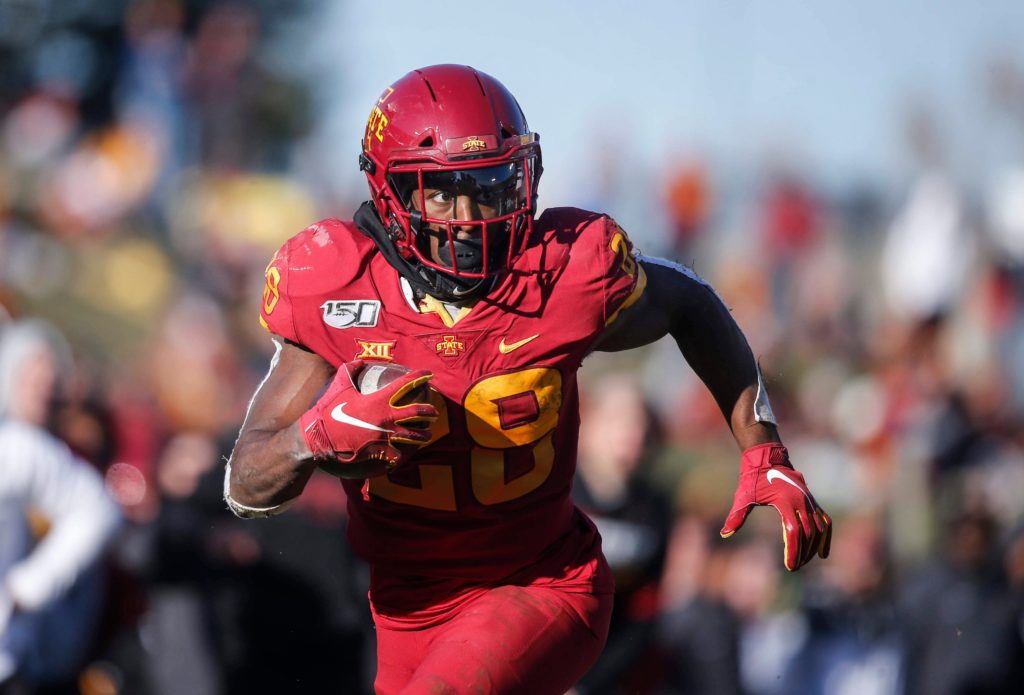
Running Backs
| 1 | 41 | Breece Hall | Iowa State |
| 2 | 68 | Kyren Williams | Notre Dame |
| 3 | 73 | Zach Charbonnet | UCLA |
| 4 | 77 | Isaiah Spiller | Texas A&M |
| 5 | 85 | Zamir White | Georgia |
This year’s running back class isn’t the most star-studded bunch we’ve seen in recent memory, but that doesn’t mean we won’t see starting backs out of this class. My issue is we don’t have a ton of big-play options in this group.
Hall is a well-rounded player with patience, burst, and surprising feet for a sturdy back that allow him to change direction smoothly. He’s the kind of grind-it-out back that is no fun to tackle and can wear down defenses throughout a game.
White is a similar player that constantly churns out tough yards by running behind his pads. However, he’s not quite as elusive as Hall, which may make him more of a fit in a two-back system as opposed to the bell-cow runner.
Williams is the most versatile player in this group, with the ability to make players miss or fight through tackle attempts. He’s got good vision, and his ability as a receiver and blocker give him the chance to be a primary back at the next level.
Spiller has a comparable skillset to Williams, although I’m not sure the long speed or physicality are at Williams’ level. Still, Spiller has a versatile skillset that will allow him to impact the game however his NFL team sees fit. He’s also the most dependable pass-catcher of these five.
Charbonnet has come into his own since transferring to UCLA. He’s an upright, powerful runner that has some similarities to James Connor. He’s not going to make many players miss, but he will confidently attack tacklers to break tackles.
Georgia’s James Cook also narrowly missed making my top 100, and while he’s just a rotational player for the Bulldogs, but he’s got the kind of big-play speed and receiving skills that can be highlighted in a pass-catching role.
RELATED | 2022 NFL Draft Prospects: Defensive Positional Rankings
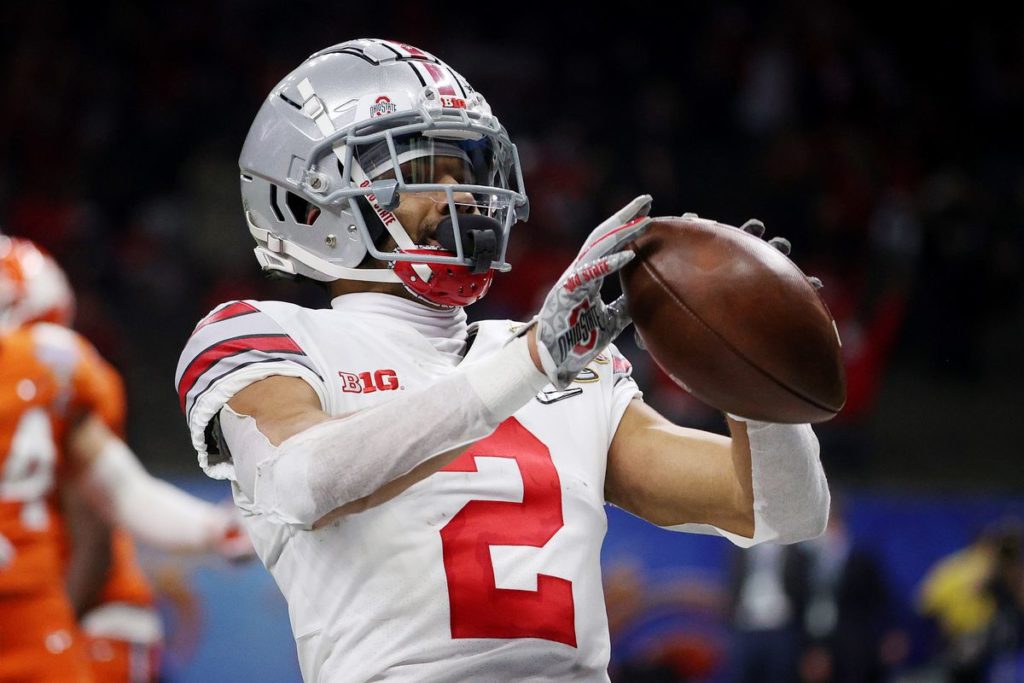
Wide Receivers
| 1 | 12 | Chris Olave | Ohio State |
| 2 | 15 | Drake London | USC |
| 3 | 17 | Garrett Wilson | Ohio State |
| 4 | 20 | Treylon Burks | Arkansas |
| 5 | 23 | Jahan Dotson | Penn State |
Yet another outstanding group of pass-catchers, the evolution of the passing attacks at the collegiate level consistently ensures that the draft is loaded with talented receivers. This year’s bunch is no exception, and that’s with players like Georgia’s George Pickens or Clemson’s Justyn Ross still trying to return to form from past injuries.
Olave reminds me of a slightly shorter Justin Jefferson as a silky-smooth athlete who can run the full route tree in the slot and on the perimeter. His body control and ball skills are also very impressive.
London is a talented possession receiver that runs tremendous routes for a big player. He plays with a high level of competitiveness, attacks the ball in the air, and his body control helps give him a vast catch radius.
Wilson is a lightning-quick player that is tough to get a hand on at the line of scrimmage or with the ball in his hands. Yet, another great route-runner in this group, the only question is how great his long speed is to make him a complete weapon.
Burks may have some of the best physical gifts in this bunch, albeit a far less polished skillset than the guys above him. His combination of play strength and play speed is in the mold of Demetrius Thomas, although he may be further along than Thomas was entering the league.
Dotson is a player I like a lot, but I think his size might limit him to the slot primarily in the NFL. He’s the shortest of this bunch and the most slender, but he’s got tremendous explosion and change-of-direction skill.
I’d love to see a team employ him the way Carolina does D.J. Moore, though he will need to add some bulk to his frame.
Tight Ends
| 1 | 36 | Jalen Wydermyer | Texas A&M |
| 2 | 50 | Sam LaPorta | Iowa |
| 3 | 63 | Jahleel Billingsley | Alabama |
| 4 | 69 | Jeremy Ruckert | Ohio State |
| 5 | 71 | Trey McBride | Colorado State |
This group of tight ends is very intriguing, considering the different skillsets among them. Wydermyer is a traditional, in-line playmaker already an NFL-ready blocker with a strong punch and the desire to finish.
His route-running was my biggest question coming into the season, and we’ve seen flashes of him improving his balance and footwork in that area. The upside is there to be the next Hunter Henry or T.J. Hockenson.
LaPorta is more of an H-back with impressive play speed and receiving skills, making him a mismatch nightmare for defenders. He’s having a bit of a breakout campaign, although the quarterback play may be hindering it a bit.
Billingsley is the wildcard of the bunch because he’s an extremely gifted H-back that can stretch the field, separate in routes, and block on the perimeter. Still, he’s been in the dog house recently, and focus has been an issue when he’s been on the field in 2021.
Ruckert is a raw player with tons of physical upside. Unfortunately, Ohio State doesn’t target tight ends all that much, and while he’s more experienced as a blocker, catching the football should be the trait teams look to hone. He could be higher than this, or he could drop because of his slow development.
McBride is another H-back type that may not have the same physical gifts as LaPorta or Billingsley. However, he’s probably the most consistent, thanks to his heavy involvement in Colorado State’s offense. He could go higher than others on this list for that reason.
Iowa State’s Charlie Kolar is also 91st on my big board, as a big-bodied traditional tight end with above-average traits to be a receiver. Proving to be a more consistent blocker could boost his stock.
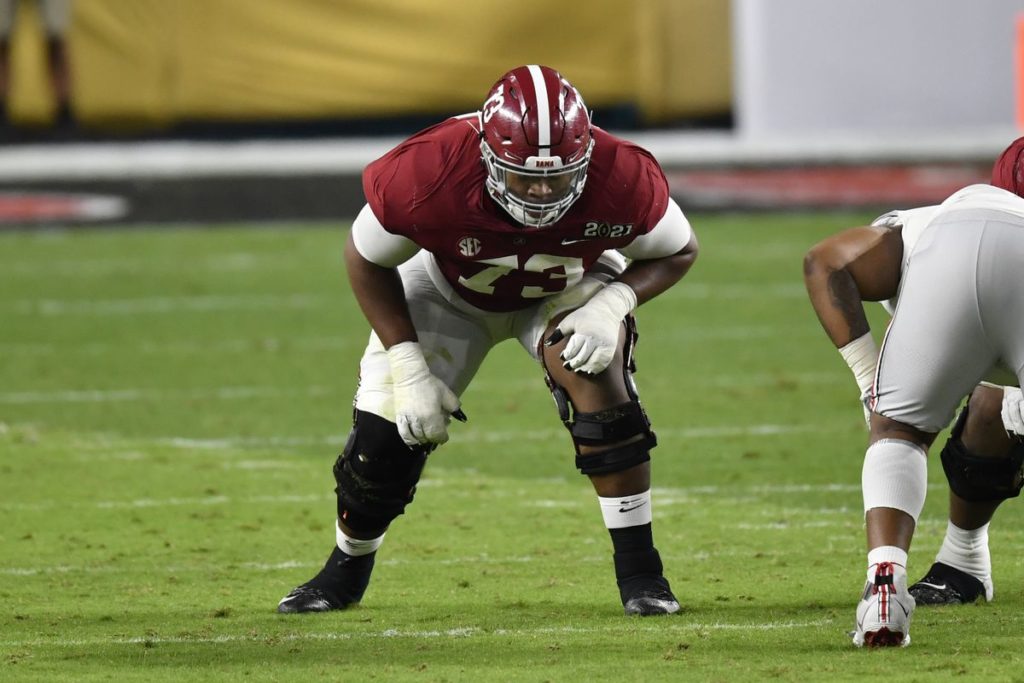
Offensive Tackles
| 1 | 2 | Evan Neal | Alabama |
| 2 | 22 | Nicholas Petit-Frere | Ohio State |
| 3 | 29 | Charles Cross | Mississippi State |
| 4 | 32 | Trevor Penning | Northern Iowa |
| 5 | 51 | Bernhard Raimann | Central Michigan |
I’ve got ten tackles in my top 100, plus several others that I project as guards in the league. Neal has an argument to be the top player in this class thanks to an elite combination of size, length, and athleticism. He’s more than holding his own on the blind side, which was the big question going into the fall.
Petit-Frere and Cross are ideal candidates for the left side because of their easy movement and ability to change course laterally. Both have made strides with the technical side of playing the position and have put themselves in the first-round category.
They will both need to further develop in the NFL, but you can’t coach their length and mobility. Washington’s Jaxson Kirkland (59 on Big Board) and Louisiana’s Max Mitchell (81) both have similar skill sets, albeit with more questions at this time.
A year ago, Spencer Brown was a third-round pick out of Northern Iowa, yet he played on the right for the Panthers. Penning is the reason why, thanks to his incredible length, excellent athleticism, and nasty demeanor. His lower half needs to get stronger, but he can stay on the left in the NFL.
Raimann is the project of the bunch, but a patient approach could result in a special player. There are flashes of functional strength and proper leverage, but his pad level is too high more often than not.
His technique needs a lot of improvement, but his history on the rugby pitch shows up with his mobility. Penn State’s Rasheed Walker (67) is also a powerful, downhill player that likely moves to the right in the league.
Washington State’s Abe Lucas (78) is also one of this class’s more polished pass-protectors, and Minnesota’s Daniel Faalele (88) is a mountain on the right side.
Guards/Centers
| 1 | 11 | Tyler Linderbaum (C) | Iowa |
| 2 | 34 | Ikem Ekwonu (G) | North Carolina State |
| 3 | 37 | Sean Rhyan (G) | UCLA |
| 4 | 40 | Zion Johnson (G) | Boston College |
| 5 | 46 | Darian Kinnard (G) | Kentucky |
While this bunch isn’t as stocked as my group of tackles, they are still a pretty talented bunch. Linderbaum leads the way as an athletic former-wrestler that should be a day-one starter. He is an impressive athlete in pass protection, and he fights to stay on blocks, whether taking on nose tackles or in space on linebackers.
I’ve been projecting Ekwonu to guard since before the season, but he is making his case to stay on the perimeter with a terrific year thus far. I still think his best position is inside, where his athleticism can shine as opposed to being just adequate on the perimeter. Still, he can play right tackle in the NFL thanks to his power and mobility.
Rhyan is a left tackle as well, and while Ekwonu’s big question is his mobility, Rhyan’s is his length. He’s a bottom-heavy player with a broad chest that is difficult to go through. His arms put him at a disadvantage on the perimeter, which is why guard should be his NFL position.
Of the four guards on this list, any could be the first drafted for a variety of reasons. With Johnson, I’m not sure there’s anything overly flashy about him. He’s just a technically sound, dependable player that has even handled himself at left tackle when asked. He’s smart, athletic, and his lower-body strength has improved from last season.
As for Kinnard, he’s a powerful road-grader that hasn’t quite had the same success on the perimeter that Ekwonu is this season. The lateral athleticism is limited, but that won’t be as big an issue inside, and when he fires off downhill, players move.

Follow us on all of our social channels! Check out our Twitter, Facebook, YouTube and TikTok for more great FlurrySports content.

